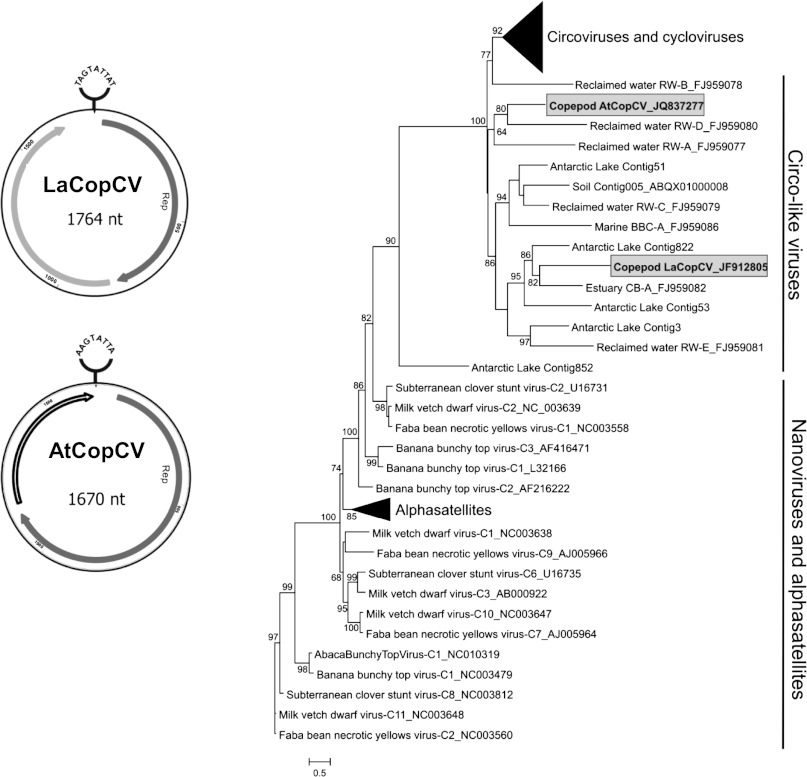Fig. 1.
Genome organization and phylogenetic placement of the circo-like viruses identified in L. aestiva (LaCopCV) and A. tonsa (AtCopCV). Both genomes have a stem-loop with a conserved nonanucleotide motif at the apex and two nonoverlapping ORFs encoding putative replication initiator (Rep) (gray) and capsid (light gray) proteins oriented in the same direction. ORFs with no hits in the database are shown in white. A maximum likelihood phylogenetic tree of Rep amino acid sequences from these viruses along with viral and associated satellite members of the viral Rep family (PF02407) and other circular Rep-encoding ssDNA viruses from various environmental sources shows that the copepod viruses are only distantly related to known and proposed members of the Circoviridae family (i.e., circoviruses and cycloviruses) and are more closely related to circo-like virus sequences assembled from environmental viral metagenomes. The collapsed circovirus and cyclovirus clade represents Reps from 43 genomes, whereas the alphasatellite clade represents 17 genomes.

